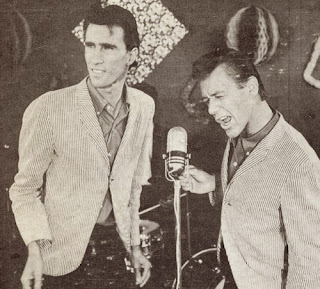Film: GHOST /Director: Jerry Zucker/"Unchained Melody"/Written and composed by Hy Zaret and Alex North/Preformed by The Righteous Bothers
GHOST
Released in 1990
Director: Jerry Zucker
Staring: Patrick Swayze, Demi Moore and Whoopi Goldberg
“UNCHAINED MELODY”
Written and composed by Hy Zaret and Alex North in 1955.
There is many version of this song. Elvis Presley, Sam Cooke, and Roy Orbison
are some of the artists who have recorded a version of "Unchained Melody."
In 1965, the Righteous Brothers covered the song and made it on the top 100 lists. In 1990, the song reached the top 100 lists again when it was revived in the film Ghost.
 |
| The Righteous Brothers |
The scene takes place in the middle
of the night, Demi Moore staring as Molly can’t sleep so she starts working
with ceramics. Patrick Swayze staring as Sam Wheat and as Molly’s boyfriend
comes into the scene. The music is diegetic. The song, “Unchained Melody” is
coming from the jute box in Molly’s studio. The music fits right into the scene
and one automatically starts feeling the romance in the air once the music
starts playing. This three-minute scene is known for its romantic essence.
The romantic music in the scene combined with the imagery in the film, not only physically affected
me but emotionally as well. I remember watching Ghost as a
little girl probably around the age of five, I don’t remember exactly how I
felt when I seen this clip for the first time but it has always been memorable
ever since. I remember as a little girl, this scene became my new definition of
what LOVE is. Now as I re-watch this clip, I honestly get butterflies, a giant
blushing smile and I am just so happy for Demi Moore/Molly because it looks
like true love and it feels like true love. This scene is still describes my definition
for love. This scene lights up my face and makes me glow; it brings back
memories of having a first kiss.
This
scene succeeded in its intended response in showing the viewers how much love the characters in the film had for each other. This feeling of
the overwhelming amount of love in this scene is important in the movie. When
Sam dies it is heartbreaking because Molly lost her true love and the audience feels her heart ache. This song is
famously well known and has become a forever-memorable classic love scene and love
song. I still want to be Demi Moore in scene and have Patrick Swayze touch my
hands as I work on ceramics while “Unchained Melody” is playing in the
background.












.jpg)

